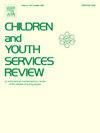The relationship between prior suicidality, criminal behavior, and current household gun access among adolescents: Does race moderate the relationship?
IF 1.7
2区 社会学
Q1 FAMILY STUDIES
引用次数: 0
Abstract
Prior empirical research has generally focused on suicidality or criminal behavior as possible correlates of household gun access among adolescents but not both, and this extant research has also not generally addressed whether race or ethnicity moderates these possible correlates even though gun ownership, violence, and suicide in the U.S. are especially defined by race. This research uses data from the first (1994 and 1995; n = 16,525) and second (1996; n = 12,016) in-home waves of the National Longitudinal Study of Adolescent to Adult Health to test two hypotheses which conceptually assert that the effects of prior suicidality and criminal behavior on home gun access vary by race. Consistent with the existing research, the current findings indicate that prior criminal behavior is associated with home gun access, and the magnitude of this empirical association is similar for White, Black, and Hispanic adolescents. In contrast, the current findings indicate that the effect of prior suicidality is moderated by race in that a prior suicide attempt is more positively associated with home gun access among Black relative to White adolescents, an empirical finding that commands greater attention especially given the recent rise in gun suicides among Black children and teens in the U.S. The implications of the current findings for future research and policy are discussed.
青少年自杀倾向、犯罪行为和当前家庭枪支获取之间的关系:种族是否会调节这种关系?
先前的实证研究通常关注自杀或犯罪行为作为青少年家庭枪支获取的可能相关性,而不是两者兼而有之,并且现有的研究也没有一般地解决种族或民族是否会缓和这些可能的相关性,即使美国的枪支所有权,暴力和自杀是由种族特别定义的。本研究使用了第一次(1994年和1995年)的数据;N = 16,525)和第二次(1996;n = 12,016)全国青少年到成人健康纵向研究的家庭波,以检验两个假设,这两个假设从概念上断言,先前的自杀行为和犯罪行为对家庭枪支获取的影响因种族而异。与现有的研究一致,当前的研究结果表明,先前的犯罪行为与家庭枪支获取有关,并且这种经验关联的程度在白人,黑人和西班牙裔青少年中相似。相比之下,目前的研究结果表明,先前的自杀行为的影响受到种族的影响,因为与白人青少年相比,先前的自杀企图与黑人青少年的家庭枪支接触更为积极,这一实证发现需要更多的关注,特别是考虑到最近美国黑人儿童和青少年中枪支自杀的上升。本文讨论了当前研究结果对未来研究和政策的影响。
本文章由计算机程序翻译,如有差异,请以英文原文为准。
求助全文
约1分钟内获得全文
求助全文
来源期刊

Children and Youth Services Review
Multiple-
CiteScore
6.30
自引率
6.10%
发文量
303
期刊介绍:
Children and Youth Services Review is an interdisciplinary forum for critical scholarship regarding service programs for children and youth. The journal will publish full-length articles, current research and policy notes, and book reviews.
 求助内容:
求助内容: 应助结果提醒方式:
应助结果提醒方式:


